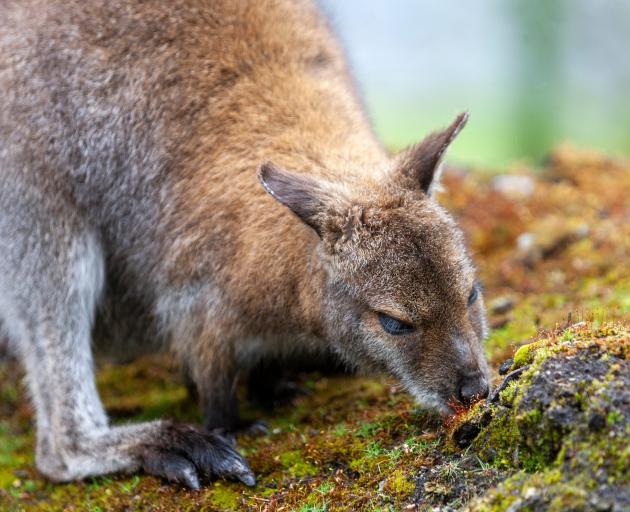
The Otago Regional Council has begun an operation to control Bennett’s wallaby in the Flagstaff area.
It will be a phased operation across 8300ha, divided into five areas and the project will continue into next year.
Landowners in the area will be contacted to discuss the work and access permissions.
Signs will alert recreational users that the operation is under way nearby.
Otago Regional Council biosecurity programme project delivery specialist Gavin Udy said Bennett’s wallabies posed a significant threat to Otago’s agriculture and biodiversity.
They were believed to have come from South Canterbury populations, with possibly some individual illegal releases also contributing to their presence in Otago.
Wallabies are herbivores that eat grass and leaves, consuming pasture and young native plants including seedlings.
"They are an environmental pest, as their grazing and browsing habits devastate native bush, impact productive farmland by damaging crops and pasture and young trees in commercial pine forests," Mr Udy said.
A Bennett’s wallaby mother usually raises one joey to wean each year.
While that joey is in her pouch, she can already have another embryo waiting in her uterus.
Immediately or shortly after giving birth she comes into heat again and can get pregnant.
Embryonic diapause or delayed implantation, which is the temporary suspension of development of the embryo, allows a female to get pregnant soon after mating while an existing joey is still in the pouch, pausing the new embryo’s development until the pouch is empty.
Since 2011, there have been 22 reported wallaby sightings in the Dunedin area and a detailed search in 2022 found wallaby droppings (scat) at Silverstream, Whare Flat and Swampy Summit. Detecting wallabies includes trained dogs, drones with thermal imaging, hunters checking for scat and prints, as well as the use of trail cameras.
Public reporting of sightings is crucial to preventing wallabies becoming established and eliminating them from Otago.
People can report any wallabies they see, dead or alive, to reportwallabies.nz.
Aerial and ground-based shooting and targeted toxins are the main methods to control wallaby populations in New Zealand and are often used in combination.
Method choices are influenced by how many wallabies are present, how widespread they are, the size and terrain of the treatment area, the cost-effectiveness of each method, any potential non-target effects and the need to ensure public safety.
No control work was undertaken without consulting landowners and putting warning signs at public land entrances to alert visitors to the work and any risks, Mr Udy said.
The operation is supported by Dunedin City Council Parks, the Department of Conservation and City Forests.
It is funded by Biosecurity New Zealand, which co-ordinates the Tipu Mātoro National Wallaby Eradication Programme.













